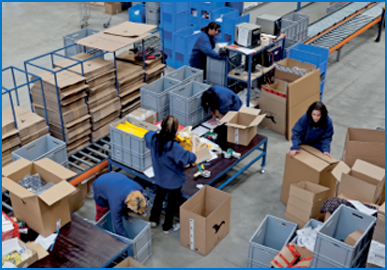2022

Overcoming The Warehouse Labor Shortage With ASRS Solutions
UNLESS YOU HAVE A COMPLETELY “LIGHTS OUT” AUTOMATED DC—and those are very rare—it has become difficult to find and retain the people needed to carry out distribution work in a flexible and cost-effective manner. While automation has helped many operations, most warehouses still need people, and they need to find ways to appeal to a younger generation of workers.
With U.S. unemployment running at or near historic lows, the labor scarcity issue has become acute. According to an analysis by CBRE, another 452,000 warehouse and DC workers were needed in the U.S. during 2018 and 2019. The projected demand for 2018-19 exceeds the industry’s job growth since 2013 of 180,300 new positions a year—an acceleration tied to growing ecommerce volume, according to CBRE.
Logistics and warehousing executives report the labor scarcity issue is a top challenge. According to MHI’s 2019 industry report, based on a survey, hiring qualified workers was cited as the single biggest challenge, with 65% rating it Labor crunch means DC operations need to maximize available workers as extremely or very challenging.
The tight labor situation leaves many companies with DC operations struggling to cope, observes Douglas Card, director of systems and special applications, North America, for Kardex Remstar, one of the world’s leading ASRS solution providers. “Operations really are struggling not only in finding people, but finding and retaining qualified people who want to work in a warehouse environment,” Card says. “Companies often say they can’t find enough qualified help, or, they just can’t find enough people period.”
Click the Button below to continue reading the White Paper.

Overcoming the Warehouse Labor Shortage

